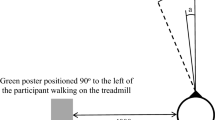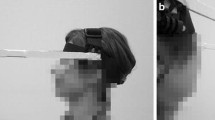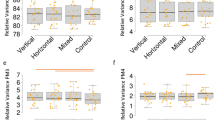Abstract.
Changing the direction of locomotion involves lateral translation of the body in addition to body reorientation to align with the new travel direction. We designed this study to investigate the CNS control of these postural adjustments. The specific aims of the study were: first, to test the hypothesis that anticipatory head movements towards the new travel path are proactively controlled by the CNS to provide a stable frame of reference for body reorientation and, second, to investigate the relative contribution of foot placement and other mechanisms to the control of lateral body translation during steering. We achieved these aims by carrying out a comprehensive biomechanical analysis of participants performing a steering paradigm and observing the effects of immobilizing the head (by fixing it to the trunk) on postural control and the sequencing of body segment reorientation. Participants performed a task whereby they were visually cued to change their direction of walking by 30° or 60°, left or right, at the midpoint of a 9-m path. The temporal sequence of body reorientation was consistent with previous findings that the head starts to turn in the direction of travel before the rest of the body. Translation of the centre of mass (COM) in the new travel direction was achieved both through alternate placement of the contralateral foot prior to the turn step and use of a hip strategy to control the body pendulum during swing. Immobilizing the head resulted in the following significant changes: earlier onset of trunk yaw with respect to cue delivery, later trunk roll onset and a reduction in trunk roll amplitude. These results provide valuable information regarding the biomechanics of steering and support the hypothesis that aligning the head with motor or locomotor goals using vision provides the CNS with a stable frame of reference, independent of gaze, that can be used to control the repositioning of the body in space.
Similar content being viewed by others
Author information
Authors and Affiliations
Additional information
Electronic Publication
Rights and permissions
About this article
Cite this article
Hollands, M., Sorensen, K. & Patla, A. Effects of head immobilization on the coordination and control of head and body reorientation and translation during steering. Exp Brain Res 140, 223–233 (2001). https://doi.org/10.1007/s002210100811
Received:
Accepted:
Published:
Issue Date:
DOI: https://doi.org/10.1007/s002210100811




